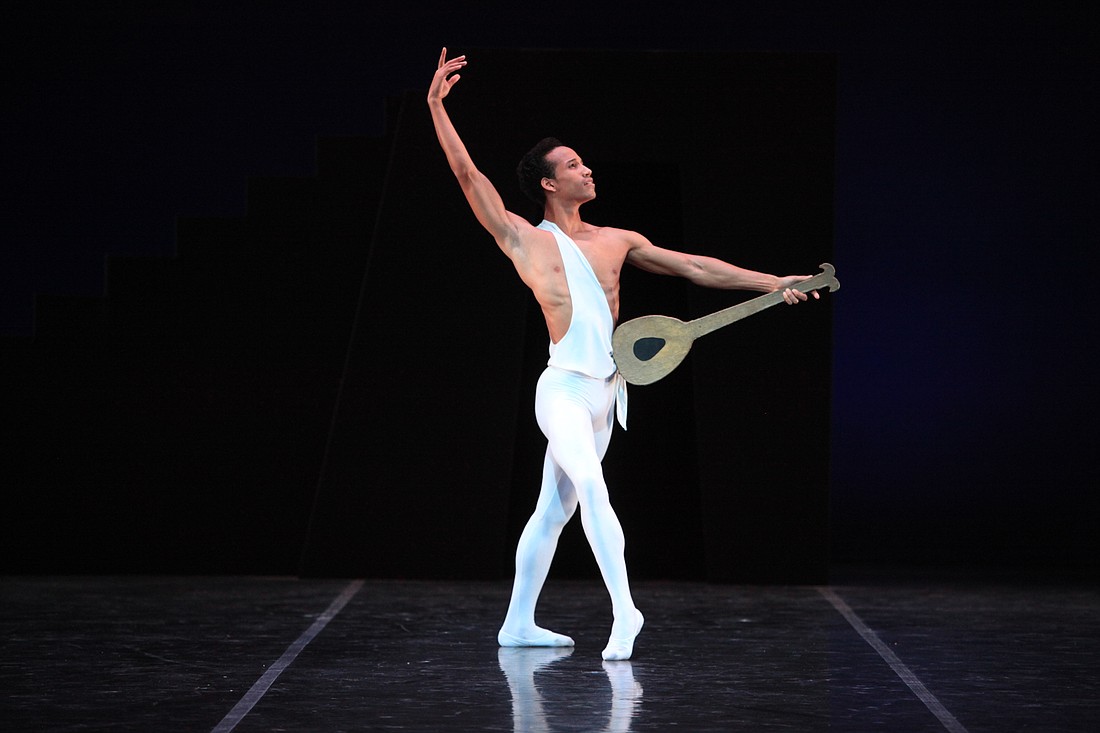- January 15, 2025
-
-
Loading

Loading

Rudolf Nureyev would have been thrilled with the performances and ballets that the Sarasota Ballet danced in his honor this past weekend. The Sarasota Ballet performed George Balanchine's "Apollo," Sir Frederick Ashton's "Jazz Calendar" and Nureyev's "Raymonda Act III." The program offered everything for a variety of interests — from the stark sets and white costumes of "Apollo" to the visual explosion of "Jazz calendar" and the elaborate production of "Raymonda." This performance truly was a bar-setting one for the Sarasota Ballet.
The program opened with Balanchine's "Apollo," starting with the birthing scene of Apollo, which is rarely performed. Ricardo Rhodes played the Greek God who demonstrates male strength and athleticism. Ellen Overstreet was light on her feet as Calliope, the muse of poetry. She demonstrated the words of poetry coming out of her mouth throughout a series of sissonne fermées and arabesques. Kristianne Klein was brilliant as Polyhymnia, the muse of mime, pulling off a variation that consists of almost entirely off-balance movements and while only having the ability to use one arm, because her other arm is stuck at the mouth as if saying "shhhh." Victoria Hulland was graceful as Terpsichore, the muse of dance & song performing grand jetés and arabesques with her arms circling around to fifth position. The best part of "Apollo" is when Apollo dances with all three of the muses when their arms are encircled and entwines and they move in and out of different positions, which creates interesting patterns and shapes.
The real standout of the evening, and audience favorite, was Ashton's "Jazz Calendar." Created in the late '60s and set to a lively jazz score by Sir Richard Rodney Bennett, the choreography and costumes have a psychedelic nature that was evident in that time period. The ballet is based on the nursery rhyme "Monday's Child." Ellen Overstreet was absolutely stunning and seductive as "Monday's Child," which accentuated her gorgeous lines, feet and extensions. Alex Harrison and Michael Burfield in “Tuesday’s Child," partnered Kate Honea, dressed in a white tassled unitard and helmet, where they performed multiple complicated lifts and tosses. Danielle Brown was incredibly expressive as she was full of sorrow in "Wednesday's Child." Juan Gil, costumed with a bowler hat, was on the go in "Thursday's Child," where the female dancers depicted different types of transportation as if they were on the train, in a boat or more. Victoria Hulland and Ricardo Graziano performed a blues-theme pas de deux dressed in red and blue costumes. David Tlaiye was hilarious in "Saturday's Child" and a strict ballet master leading an all-male ballet class. And Elizabeth Sykes, also costumed in a multi-colored tassled unitard and helmet, dazzled as she lead the "Sunday's Child" finale with the entire cast full of energy and spunk.
Even though the dancing was superb in Nureyev's "Raymonda Act III," the elaborate sets and costumes almost overshadowed the performance. The gilded sets, giant chandeliers and detailed costumes were absolutely stunning. It was thrilling to see the entire stage filled with the Hungarian Couples lead by the cheery Logan Learned and Sara Scherer and later by the Grand Pas Couples. Danielle Brown and Ricardo Graziano were regal as Raymonda and Jean de Brienne. Brown was precise and sharp in her variation that included multiple repetitions of relevé retirés. Graziano always delights with multiple leaps and turns. And each of the variations danced by Amy Wood, Elizabeth Sykes, Nicole Padilla and Kate Honea highlighted each of the dancers' strong suits, talents and almost seemed like they were choreographed for them. Staged by Margaret Barbieri, Laurent Hilaire and Ian Webb, this production certainly had it all.